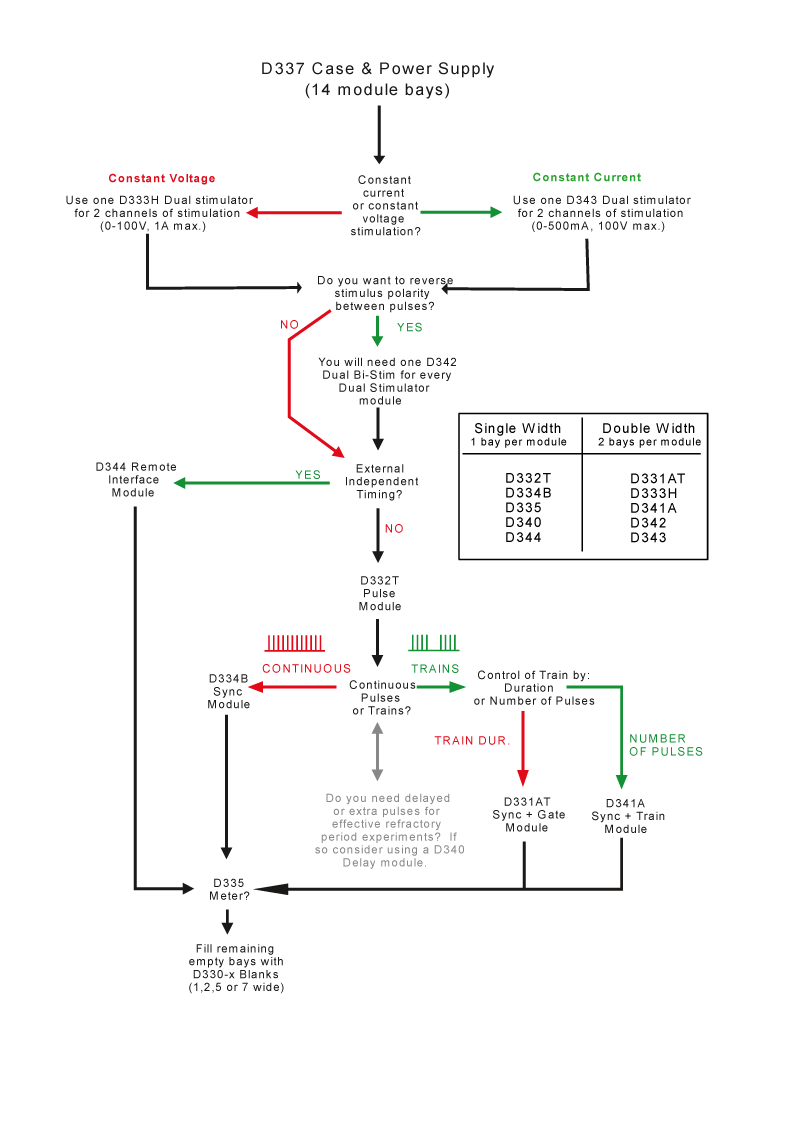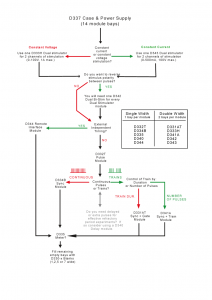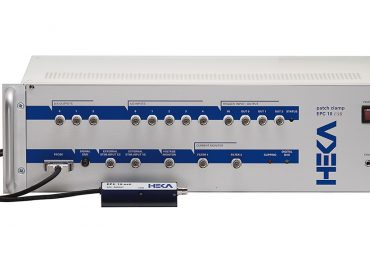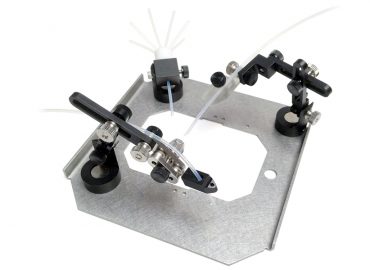Confused by D330 MultiStim System Configuration?
A Digitimer Guide to Correct Module Selection
Introduction
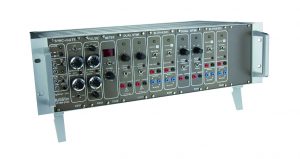 The D330 MultiStim System has been designed for use in laboratories where a number of in vitro preparations or cell culture wells need stimulation from a low impedance source. These studies are known as punctate or field/bath stimulation and are often used for pharmacological testing of multiple tissue preparations, however, field stimulation of cell cultures is an increasingly popular application for the MultiStim.
The D330 MultiStim System has been designed for use in laboratories where a number of in vitro preparations or cell culture wells need stimulation from a low impedance source. These studies are known as punctate or field/bath stimulation and are often used for pharmacological testing of multiple tissue preparations, however, field stimulation of cell cultures is an increasingly popular application for the MultiStim.
The D330 system uses a common timing waveform for each channel but individually controlled stabilised stimuli to each preparation. The stimulation system includes modules for constant voltage stimulation up to 100V 1A (D333H) and constant current stimulation up to 500mA from a 100V source (D343).
The D330 MultiStim System is available in a 19” rack or bench mountable case, which can house up to 10 channels of stimulation. The system is modular so that a minimal system may be expanded upon at a later date or split into smaller units for two sites.
Modules are available to generate pulses variable in frequency and duration; these can be supplied in bursts using a GATING waveform variable in repetition, duration or count. In addition, extra delayed pulses can be generated for studies involving the refractory period. Most controls are either single turn or 10-turn with locking dials. Sockets are fitted to allow external control and synchronisation.
How Do You Configure a System?
In order to select the correct type and number of modules to create a functional multi-channel stimulator, a number of basic questions need to be answered.
- How many stimulation channels are needed?
The number of channels is determined by the number of preparations, separate wells or chambers. - Is the stimulus to be constant current or constant voltage?
With constant voltage stimulation, the voltage is controlled by a dial, but the current will vary depending on the impedance of the preparation. With constant current, the user sets the current and the voltage will increase or decrease with impedance changes in order to maintain it at the set level. Constant current can be advantageous when the impedance is likely to vary during an experiment. - Does the polarity need to reverse between pulses?
Reversing the polarity after each stimulus can be beneficial as it prevents electrodes from becoming oxidised as the flow of current is continuously reversed during a stimulation protocol. - Will the timing of individual pulses be provided by an external source?
External timing can mean digital trigger pulses coincident with each stimulus pulse or TTL high/low commands to “gate” stimulation on and off, with the D330 system determining the stimulation frequency.
Once answers to these questions are available, it should be possible to make appropriate module selections using the flowchart below.
Don’t Forget to Cover Unused Bays
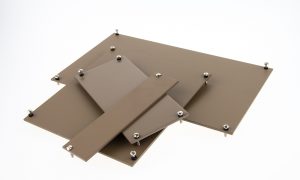 For safety reasons, it is important that any unused bays in the rack are covered with blanking panels that prevent solutions or curious fingers from reaching into dangerous high voltage components. These blank panels are available in a range of widths, so the system can be configured for easy future expansion.
For safety reasons, it is important that any unused bays in the rack are covered with blanking panels that prevent solutions or curious fingers from reaching into dangerous high voltage components. These blank panels are available in a range of widths, so the system can be configured for easy future expansion.
An Extensive Range of Timing Modules for Variety of Types of Stimulus Protocols
The D330 MultiStim range includes several different modules that can be used for the control of stimulus timing. The most basic system configuration uses the D334B SYNC module to convert incoming TTL trigger pulses to constant voltage or constant current stimuli. Adding the D332T PULSE module allows the MultiStim to be gated on and off using an external TTL high/low input. For standalone use, the D330 can be configured with the D331AT or D341A which permit the user to pre-program repeating burst of pulses either defined in terms of duration and frequency or alternatively by repetition interval and the number of pulses. Further modules such as the D340 COUNT + DELAY may be used to insert additional stimulation pulses which may be used for studies of the effective refractory period.
Examples of D330 MultiStim timing configurations are available here.
Bibliography of Recent Articles
Chen, Z., Li, B., Zhan, R. Z., Rao, L., & Bursac, N. (2021). Exercise mimetics and JAK inhibition attenuate IFN-γ-induced wasting in engineered human skeletal muscle. Science Advances, 7(4). https://doi.org/10.1126/sciadv.abd9502
Bonnycastle, K., Kind, P. C., & Cousin, M. A. (2020). FMRP sustains presynaptic function via control of activity-dependent bulk endocytosis. BioRxiv. https://doi.org/10.1101/2020.09.10.291062
de Souza, D. R., Vasconcelos, D. A. A. de, Murata, G. M., Fortes, M. A. S., Marzuca-Nassr, G. N., Levada-Pires, A. C., … Pithon-Curi, T. C. (2020). Glutamine supplementation versus functional overload in extensor digitorum longus muscle hypertrophy. PharmaNutrition, 14. https://doi.org/10.1016/j.phanu.2020.100236
Khairullin, A. E., Ziganshin, A. U., & Grishin, S. N. (2020). The Influence of Hypothermia on Purinergic Synaptic Modulation in the Rat Diaphragm. Biophysics (Russian Federation), 65(5), 858–862. https://doi.org/10.1134/S0006350920050085
Fong, Z., Griffin, C. S., Hollywood, M. A., Thornbury, K. D., & Sergeant, G. P. (2019). Β3-Adrenoceptor Agonists Inhibit Purinergic Receptor-Mediated Contractions of the Murine Detrusor. American Journal of Physiology – Cell Physiology, 317(1), C131–C142. https://doi.org/10.1152/ajpcell.00488.2018
Khairullin, A. E., Teplov, A. Y., Grishin, S. N., Farkhutdinov, A. M., & Ziganshin, A. U. (2019). The Thermal Sensitivity of Purinergic Modulation of Contractile Activity of Locomotor and Respiratory Muscles in Mice. Biophysics (Russian Federation), 64(5), 812–817. https://doi.org/10.1134/S0006350919050075
Ziganshin, A. U., Khairullin, A. E., Teplov, A. Y., Gabdrakhmanov, A. I., Ziganshina, L. E., Hoyle, C. H. V., … Grishin, S. N. (2019). The effects of ATP on the contractions of rat and mouse fast skeletal muscle. Muscle and Nerve, 59(4), 509–516. https://doi.org/10.1002/mus.26423
To find out more about the D330 MultiStim, just visit the product pages or contact us.
